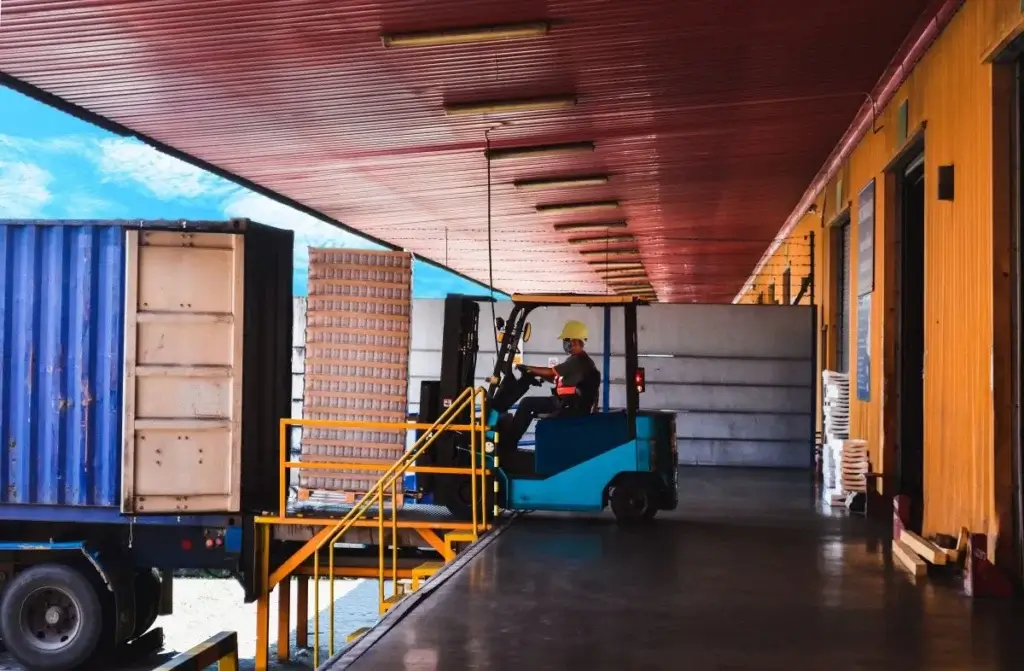The Purchasing Managers’ Index (PMI) is a monthly business survey compiled by S&P Global that tracks output, orders, employment, inventories and prices. Readings above 50 indicate growth compared to the previous month, while readings below 50 point to contraction. Because PMI is among the earliest indicators published each month, it is closely watched as a leading signal for economic performance, investment trends, and freight demand across Europe.
The HCOB Flash Eurozone Composite PMI rose slightly to 51.2 in September, from 51.0 in August, its highest in 16 months. However, the manufacturing sector reversed course: the Eurozone Manufacturing PMI dropped to 49.8, down from 50.7 in August, ending the sector’s brief return to growth after three years of decline.
New factory orders fell at the fastest pace in six months, while employment contracted at the sharpest rate since June. Firms also cut purchasing and reduced inventories, as supplier delivery times lengthened to the greatest extent in almost three years.
Manufacturers reported marginal price reductions for both inputs and outputs, marking the fifth consecutive month of discounting. Analysts said the easing of cost pressures could influence the European Central Bank’s policy stance.
Growth diverged across member states: the Netherlands, Greece, Spain and Ireland remained in expansion, while Germany (49.5), Italy (49.0), and France (48.2) stayed in contraction.

Dr. Cyrus de la Rubia, Chief Economist at Hamburg Commercial Bank, commented:
“For the seventh month in a row, production in the eurozone has ticked upwards compared to the previous month, but progress has been sluggish. There is no clear sign that things are about to pick up speed anytime soon.”
Germany: strong output fails to lift manufacturing out of contraction
Germany’s manufacturing PMI fell slightly to 49.5 in September, from 49.8 in August. Production rose at its fastest rate since March 2022, but this strength was offset by renewed falls in new orders and weak exports.
Employment contracted at the fastest pace since June, while purchasing activity declined and suppliers’ delivery times lengthened for the first time in nearly three years. Input prices fell sharply, but competitive pressures limited firms’ ability to raise selling prices.
Dr. de la Rubia warned:
“The attempt to break through the expansion mark of 50 has failed … output, which rose quite solidly in late summer, will grow only marginally in the coming months, if at all.”
United Kingdom: private sector growth slows, manufacturing contracts
UK private sector activity grew for the fifth month running, but momentum weakened. The Flash Composite PMI dropped to 51.0 from 53.5 in August, its weakest since May.
The flash UK Manufacturing PMI fell to 46.2, its lowest in five months, with output down sharply at 45.4. Firms cited weak domestic and overseas demand, including lower sales to Europe and the US, as well as disruptions in the automotive sector.
Chris Williamson, Chief Business Economist at S&P Global Market Intelligence, said:
“September’s flash UK PMI survey brought a litany of worrying news including weakening growth, slumping overseas trade, worsening business confidence and further steep job losses. The only good news … is that price pressures have moderated in September.”
Poland: downturn eases as PMI rises to five-month high
Poland’s manufacturing PMI improved to 48.0 in September, from 46.6 in August, signalling a softer contraction. Output, new orders and exports all declined, but at slower rates.
Employment fell marginally, while backlogs of work increased for only the second time in over three years. Input prices dropped at the fastest pace since January, and output charges also fell slightly.
Trevor Balchin, Economics Director at S&P Global Market Intelligence, noted that the September reading “points to a potential recovery in business conditions in the fourth quarter.”
Netherlands: strongest growth in over three years
The Dutch manufacturing sector recorded its fastest improvement since July 2022, with the Nevi Netherlands Manufacturing PMI rising to 53.7 in September from 51.9 in August. Output and new orders both increased at the quickest pace in 16 months, driven mainly by firmer domestic demand, while export sales declined slightly amid strong competition in global markets.
Firms also expanded staffing levels at the fastest rate since December 2022, reflecting confidence in the outlook. Input costs rose only marginally, marking the weakest increase in nearly a year, but supply chains came under strain as vendor delivery times lengthened at the sharpest pace since late 2022.
David Kemps, Sector Banker Manufacturing at ABN AMRO, said the latest data showed that “industrial production volume increased due to domestic demand, necessitating the swift hiring of additional staff,” though he noted that global competition, especially from Asia, continues to weigh on exports.
Italy: recovery stalls as PMI slips back into contraction
Italy’s PMI fell to 49.0 in September, from 50.4 in August, marking the steepest decline in three months. Output and new orders both contracted, with export demand weakening across Europe, the US and Asia.
Employment rose for the first time in a year, supported by investment plans, but input costs climbed at the fastest pace since March, limiting margins.
Spain: expansion slows but growth continues
Spain remained in expansion, though growth lost momentum. The PMI came in at 51.5, down sharply from 54.3 in August. Output and new orders rose modestly, but exports fell for the first time in three months.
Firms cut jobs for the first time since February, while competitive pressures forced slight reductions in selling prices despite rising input costs.
France: contraction deepens amid political uncertainty
France’s PMI slipped to 48.2 in September, from 50.4 in August, as output and new orders fell. Companies cited weaker demand, political instability following the fall of the Bayrou government, and US tariffs as key drags.
Purchasing activity and inventories fell sharply, with finished goods stocks declining at the fastest rate in nearly five years. Employment continued to rise marginally, but optimism weakened to its lowest level since January.









